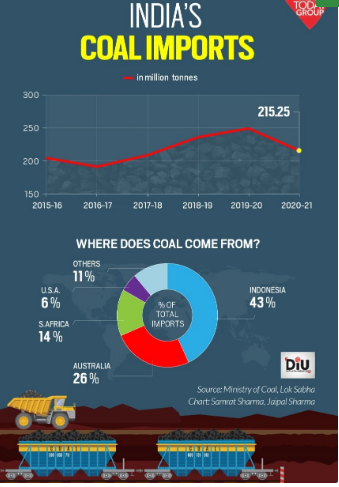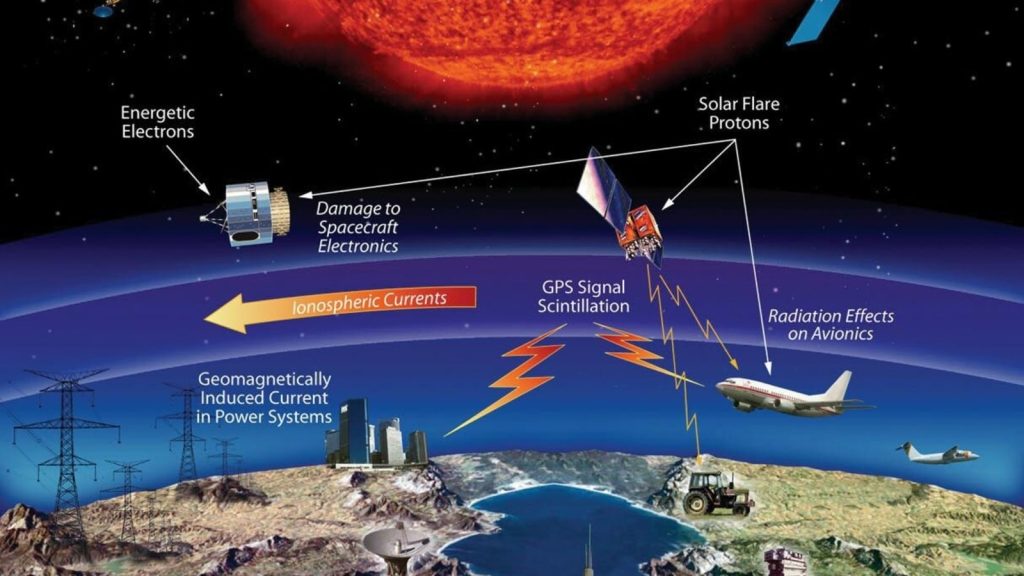Contents:
- World Thalassemia Day
- Drop in prices of edible oils
- India’s coal imports surge
- Lithium deposits discovered in Rajasthan
- India witnesses rare Aurora lights
World Thalassemia Day
Context:
World Thalassemia Day is a global healthcare event commemorated every year on May 8th to raise awareness about the condition among the local public and policymakers, apart from supporting and strengthening the morale of the victims who have battled for years with this fatal disease.
- This year the theme on World Thalassemia Day is “Be Aware. Share. Care: Strengthening Education to bridge the Thalassemia care gap
Relevance:
GS II- Health
Dimensions of the Article:
- What are ‘Rare diseases’?
- About Thalassemia
- Importance of preventive screening and awareness
What are ‘Rare diseases’?
A rare disease, also referred to as an orphan disease, is any disease that affects a small percentage of the population.
Most rare diseases are genetic, and are present throughout a person’s entire life, even if symptoms do not immediately appear.
- Haemophilia,
- Thalassemia,
- Sickle-cell anaemia,
- Auto-immune diseases,
- Pompe disease,
- Hirschsprung disease,
- Gaucher’s disease,
- Cystic Fibrosis,
- Hemangiomas and
- Certain forms of muscular dystrophies
Are some of the most common rare diseases recorded in India.
About Thalassemia:
- Thalassemia is a genetic blood condition in which the body generates insufficient haemoglobin. Haemoglobin is a protein molecule found in red blood cells that transports oxygen. Anemia is caused by the severe loss of red blood cells caused by this illness.
- Anaemia is a condition in which the number of red blood cells or haemoglobin is lower than usual.
- It is a hereditary disorder that is caused mostly by faulty haemoglobin production. It is passed down by one of the parents who is a carrier of the disease due to a genetic mutation or deletion of specific critical gene segments.
- Parents are usually asymptomatic as carriers and there is a 25 per cent chance of passing it on to their children.
- Acute thalassemia may require regular blood transfusions, whereas mild thalassemia does not require therapy.
- Effects:
- It affects all organs of the body. It starts with the bone marrow being unable to produce adequate haemoglobin.
- The liver and spleen also come under pressure and overworked.
- Sometimes thalassemics experience facial bone deformities.

Importance of preventive screening and awareness:
- A person living with thalassemia has a life-long struggle.
- The cost of maintaining a child with Thalassemia Major is almost Rs 2 lakh per year.
- The rate of picking up a Thalassemia trait is 3-4 per cent. This means for every 100 people screened, there would be at least three to four people detected with the trait.
- Hence preventive screening is an important measure.
- Testing people for Thalassemia carrier status in society is very important to prevent the birth of a single Thalassemic child.
-Source: The Indian Express
Drop In Prices Of Edible Oils
Context:
A body of oil millers and oil seek traders in Gujarat has appealed to the central government to take measures to arrest the slide to protect Indian oilseeds producers.
Relevance:
GS-III: Agriculture (Agricultural Resources, Food Security), GS-II: Governance (Government Policies & Interventions)
Dimensions of the Article:
- Key points
- What are its effects?
- About India’s Oilseeds Production and Imports
- Government Scheme- National Mission on Edible Oil-Oil Palm (NMEO-OP)
Key points:
- The retail prices of most edible oils has been softening in the recent months vis-à-vis the corresponding period last year.
- Gujarat State Edible Oils and Oil Seeds Association (GSEOOSA) urging the central government to take steps to stop prices from going further down.
- The price of mustard oil has declined by 10% while the palmolein oil and refined soybean oil price are down by 41 per cent.
- The highest drop, 45.95 per cent, has been reported in the price of refined sunflower oil.
What are its effects?
- This can impact the Indian oilseeds producers and increase the country’s dependence on the imports of the commodity.
- All those involved in edible oils trade – from importers, producers, packers, to wholesalers and retailers can incur huge loss.
- This can also impact the sowing of oil seeds considerably in the upcoming kharif season.
- Measures such as raising import duty, introduce quantitative import restrictions etc to stop the slide of edible oil prices.
About India’s Oilseeds Production and Imports
- India’s vegetable oil economy is world’s fourth largest after USA, China & Brazil.
- India is also third largest cultivator of oilseeds in the world and paradoxically meets into more than 50% requirement through imports.
- Major Oilseeds Producing Areas in India are: Rajasthan, Gujarat, Tamil Nadu, Madhya Pradesh, Haryana, Maharashtra, Karnataka, Andhra Pradesh.
- Due to diverse agro-climatic conditions and geographical locations, farmers are able to grow all the nine annual oilseeds viz. groundnut, rapeseed, soybean, sunflower, sesame, safflower, niger, castor and linseed.
- In India, oilseeds are second most important crop after cereals sharing 14% of the country’s gross cropped area and accounting for nearly 3% of GDP.
- Oilseed accounts for 13% of the Gross Cropped Area, 3% of the Gross National Product and 10% value of all agricultural commodities.
- India needs a threefold increase in the oilseeds production in the next 35 years as – like pulses, oilseeds face severe challenges in terms of climatic stresses and unfavourable farming conditions.
- Oilseed cultivation is mainly undertaken on marginal land by resource poor farmers who are generally reluctant to provide necessary inputs for increasing the productivity.
- Nearly 82% of the oilseeds area fall under rainfed farming where climatic vagaries cause severe damage to crops.
- Out of the total requirement, 10.50 million tonnes are produced domestically from primary (Soybean, Rapeseed & Mustard, Groundnut, Sunflower, Safflower & Niger) and secondary sources (Oil palm, Coconut, Rice Bran, Cotton seeds & Tree Borne Oilseeds) and remaining 60%, is met through import.
- Despite the oilseed production of the country growing impressively, there exists a gap between the demand and supply of oilseeds, which has necessitated sizeable quantities of imports.
- Import of Edible oils:
- India’s edible oil import bill in FY 2022 has crossed $19 billion for more than 14 million metric tonnes of imports.
- Its import dependence on edible oil stands at 55-60% of the total consumption. Indian agriculture is largely competitive – but its biggest Agri-import item, edible oils account for 59% of the total agri-imports. This is despite the very high import duties on its imports. Of edible oil imports, more than half is palm oil, followed by soyabean & sunflower.
Government Scheme-National Mission on Edible Oil-Oil Palm (NMEO-OP)
- National Mission on Oilseeds and Oil Palm (NMOOP) was implemented during the 12th Five Year Plan, to expand the oil palm areas and increase the production of edible oils.
- It was later merged with the National Food Security Mission.
- NMEO-OP aims resolve to allow India to be independent or self-reliant in edible oil production.
- Through this mission, more than ₹11,000 crore will be invested in the edible oil ecosystem.
- The government will ensure that farmers get all needed facilities, from quality seeds to technology.
- Along with promoting the cultivation of oil palm, this mission will also expand the cultivation of our other traditional oilseed crops.
Need for NMEO-OP
- During the last few years, the domestic consumption of edible oils has increased substantially and has touched the level of 18.90 million tonnes in 2011-12 and is likely to increase further.
- A substantial portion of our requirement of edible oil is met through import of palm oil from Indonesia and Malaysia.
- It is, therefore, necessary to exploit domestic resources to maximize production to ensure edible oil security for the country.
-Source: The Indian Express
India’s Coal Imports Surge
Context:
India’s coal imports increased by 30 per cent to 162.46 million tonnes in the 2022-23 financial year against 124.99 MT in the year-ago period
Relevance:
GS-III Indian Economy, Industry and Infrastructure
Dimensions of the Article:
- Key points
- What is Coal?
- Types of Coal
- Why is the ‘move away from coal’ so important?
- What is the extent of India’s dependence on coal?
- How has war made India’s move away from coal difficult?
Key points:
- As per the latest report, there has been an increase in India’s coal imports by 30 per cent to 162.46 million tonnes in the 2022-23 financial year against 124.99 MT in the year-ago period.
- India is among the top five coal-producing countries in the world.
- However, some parts of its coal requirement are met through imports as the country is also among the major consumers of the dry fuel.
- India is heavily dependent on imports when it comes to coking coal, a key raw material used in steel making.
- Reason for the rise in Imports: The persistently high demand for steam coal in India coupled with the weakening of seaborne prices led to the rise.

What is Coal?
- Coal is a combustible black or brownish-black sedimentary rock rich in carbon and hydrocarbons that takes millions of years to develop, making it a non-renewable energy source.
- Coal is also known as black gold
- It contains energy stored by plants that flourished hundreds of millions of years ago in swampy forests.
- Coal is made up of carbon, volatile matter, moisture, and ash, as well as [in some situations] sulphur and phosphorus.
- Metallurgy and power generation are the most common applications for this material.
Coal is divided into two groups in India:
- Gondwana Coalfields, which are 250 million years old,
- Tertiary Coalfields, which are 15 to 60 million years old.
Types of Coal
It can be classified into the following types on the basis of carbon content:
Anthracite
- This coal is of the highest quality, containing 80 to 95 percent carbon.
- It contains extremely little volatile substances and a little amount of moisture.
- It’s a hard, compact jet black coal with a semi-metallic lustre. It is the most valuable and has the highest heating value of all the coal kinds.
- It is only found in limited quantities in India, and only in Jammu and Kashmir (near Kalakot).
Bituminous
- This is the most common coal. It has a wide range of carbon content (60 to 80 percent) and moisture content.
- It is dense, compact, and usually black in colour; it contains no remnants of the original vegetable material from which it was made; and it has a high calorific value due to a high carbon content and low moisture content.
- Bituminous coal is utilised not only for steam generation and heating, but also for the manufacturing of coke and gas due to its high quality.
- Jharkhand, Orissa, West Bengal, Chhattisgarh, and Madhya Pradesh produce the majority of bituminous coal.
Lignite
- Lignite, also known as brown coal, is a lower-grade coal that contains 40 to 55 percent carbon and is the intermediate stage in the transformation of woody matter to coal.
- Its colour ranges from dark to black-brown, and its moisture content (around 35%) means it produces a lot of smoke but little heat.
- It can be found in Rajasthan’s Palna, Tamil Nadu’s Neyveli, Assam’s Lakhimpur, and Jammu & Kashmir’s Karewa.
Peat
- This is the first stage of the transformation of wood into coal, and it comprises less than 40% to 55% carbon, plenty of volatile stuff, and a lot of moisture.
- It is rarely compact enough to create a decent fuel without being compressed into bricks.
- When left to its own devices, it behaves like wood, emitting less heat, producing more smoke, and producing a lot of ash.
Why is the ‘move away from coal’ so important?
- The threat of global warming looms over the planet, promising to bring about unprecedented natural calamities.
- An effective way to keep the danger at bay is to cut the use of fossil fuels — coal, natural gas and oil.
- About 80% of the world’s energy requirements are met by these three fuels.
- They have likely brought on the climate crisis we now face, as they trigger the emission of carbon dioxide.
Worst culprit: Coal
- It emits nearly twice as much carbon dioxide as natural gas and about 60% more than oil, on a kilogram-to-kilogram comparison.
- Combusting coal also leaves behind partially-burnt carbon particles that feed pollution and trigger respiratory disorders.
- The consequence of these chemical reactions gains great significance because, the power sector in India accounts for 49% of total carbon dioxide emissions, compared with the global average of 41%.
What is the extent of India’s dependence on coal?
- As of February 2022, the installed capacity for coal-based power generation across the country was 2.04 lakh megawatt (MW).
- This accounts for about 51.5% of power from all sources.
- This compares with about 25,000 MW of capacity based on natural gas as fuel, or a mere 6.3% of all installed capacity.
- Renewable power accounted for 1.06 lakh MW or 27%.
- Coal-based power stations are retired periodically which happens all the time.
- But is not fast enough nor are new additions being halted. And with good reason – coal is still inexpensive compared with other sources of energy.
- For FY20, for example, India added 6,765 MW power capacity based on coal as fuel. But only 2,335 MW was retired.
- According to the IEA’s Coal Report 2021, India’s coal consumption will increase at an average annual rate of 3.9% to 1.18 billion tonnes in 2024.
How has war made India’s move away from coal difficult?
- Natural gas has been dubbed as the transition fuel in India’s plans to move away from coal.
- The international cost of natural gas has zoomed in the recent past from a level that was considered already too high to be financially viable.
- On May 17, 2022, the price per MMBTU of gas was ₹1,425, compared with ₹500 in April, 2021.
- Even back in November last, well before the war made things difficult, the government put in place a committee to ensure that natural gas prices remained stable.
- Of the 25,000 MW of gas-based power plants, about 14,000 MW remains stranded, or idle, because they are financially unviable.
- While renewable energy sources are cheaper than coal, their ability to generate power consistently is subject to the whims of nature — the wind and the Sun.
- Coal can give you power on demand.
- Storage technologies are still not mature enough to help renewable energy sources become reliable generators of power.
-Source: The Indian Express
Lithium Deposits Discovered in Rajasthan
Context:
After Jammu and Kashmir, lithium reserves have been traced in Rajasthan.
Relevance:
GS Paper-3: Science and Technology- developments and their applications and effects in everyday life
Dimensions of the Article:
- New Lithium Deposits
- Lithium Metal
- Significance of Lithium
- China’s Lithium Dominance
New Lithium Deposits:
- As per the report by the State Government officials of Rajasthan, new lithium deposits were discovered in Rajasthan.
- Officials have even alleged that the lithium reserves are higher than the ones recently found in Jammu and Kashmir and the quantity of lithium in Rajasthan can meet around 80% of India’s demand.
- For the first time, lithium reserves were found in Jammu and Kashmir’s Reasi in February this year.
Lithium Metal
- With three protons and the element symbol Li, lithium is the third element in the periodic table. The atomic mass of it is 6.941.
- Two stable isotopes of lithium, lithium-6 and lithium-7, combine to form natural lithium.
- Lithium is the lightest metal, making up more than 92% of the element’s natural abundance. Of all the metals, lithium has the lowest density.
- The metal is stored under oil or enclosed in an inert atmosphere because it reacts with both air and water. It is challenging to put out a lithium fire because of the reaction with oxygen.
- Lithium burns brightly red when it is ignited.
- It was one of the three elements, along with hydrogen and helium, that were created during the big bang.
- The element occurs naturally in the Earth’s crust in an abundance of about 0.0007%.
Significance of Lithium
- Lithium is a soft, shiny grey metal that can be found in the earth’s crust. Lithium is significant to India. Its capacity for energy has made it useful in a variety of industries, earning the nickname “white gold.”
- The majority of the world’s lithium production in the future will go towards making the batteries that power electric vehicles and other modern appliances.
- India is currently dependent on imports of lithium because it lacks its own lithium resources.
- In fiscal 2022, India imported Lithium and Lithium ion worth almost ₹14,000 crore.
- These reserves are uncommon.
- India could become truly “Atmanirbhar” by utilising the potential of the lithium reserves in J&K, which would also help it achieve its goals for renewable energy while reducing its reliance on foreign nations.
- Lithium is a key component of India’s plan to increase EV penetration by 30% by 2030.
China’s Lithium Dominance
- Although China is the world’s largest market for electric vehicles, it controls both the supply and demand side of the lithium industry. It also controls nearly 75% of the world’s production of cell components and battery cells. As a result, the spread of EVs may lead to India’s dependence on China, similar to how it is dependent on the Middle East for crude oil.
- However, the reserves in J&K offer a significant opportunity for India to become self-sufficient.
-Source: Live Mint
India Witnesses Rare Aurora Lights
Context:
India, for the first time witnessed the rare aurora lights from Ladakh.
Relevance:
Prelims, GS-III: Science and Technology
Dimensions of the Article:
- India captures Northern lights
- What is a Solar flare?
- What is a Geomagnetic storm?
- What is aurora?
India captures Northern lights:
- Recently, the Indian Astronomical Observatory above Mount Saraswati captured a rare phenomenon: A geomagnetic storm which struck Earth’s magnetic field, causing the charged particles from the sun to collide with atoms and molecules in the Earth’s atmosphere.
- These collisions result in “Aurora” or the northern or southern lights.
- The regions where the aurora can be seen are Earth’s magnetic poles and regions near them.
- The rare sightings from these sites are likely due to the fact that the Auroras extended to these lower latitudes, allowing people in these areas to witness the natural phenomenon.
- Significance:
- The Aurora phenomenon is a natural light show that is regarded as one of the most beautiful displays in the world.
- The Aurora phenomenon captured in India can be used as a valuable tool for scientific research too.

What is a Solar flare?
- A solar flare is a sudden flash of increased brightness on the Sun, usually observed near its surface and in close proximity to a sunspot group.
- Powerful flares are often, but not always, accompanied by a coronal mass ejection.
- Even the most powerful flares are barely detectable in the total solar irradiance (the “solar constant”).
- Flares are closely associated with the ejection of plasmas and particles through the Sun’s corona into interplanetary space. Solar flares also copiously emit radio waves.
- It usually takes days for the solar plasma ejecta to reach Earth.
- Flares also occur on other stars, where the term stellar flare applies.
- Flares occur in active regions around sunspots, where intense magnetic fields penetrate the photosphere to link the corona to the solar interior.
- The frequency of occurrence of solar flares varies following the 11-year solar cycle.
- If the ejection is in the direction of the Earth, particles associated with this disturbance can penetrate into the upper atmosphere (the ionosphere) and cause bright auroras, and may even disrupt long-range radio communication.
What is a Geomagnetic storm?
- A geomagnetic storm (commonly referred to as a solar storm) is a temporary disturbance of the Earth’s magnetosphere caused by a solar wind shock wave and/or cloud of magnetic field that interacts with the Earth’s magnetic field.
- The disturbance that drives the magnetic storm may be a solar coronal mass ejection (CME) or (much less severely) a co-rotating interaction region (CIR), a high-speed stream of solar wind originating from a coronal hole.
- The frequency of geomagnetic storms increases and decreases with the sunspot cycle. During solar maximum, geomagnetic storms occur more often, with the majority driven by CMEs.

What is aurora?
- An aurora, also known as the polar lights or aurora Polaris, is a natural light display in Earth’s sky, predominantly seen in high-latitude regions (around the Arctic and Antarctic).
- There are two types of aurora – the aurora borealis and aurora australis – often called the northern lights and southern lights.
- Conditions to witness the aurora lights: a clear sky, no clouds, and total darkness.
- Auroras display dynamic patterns of brilliant lights that appear as curtains, rays, spirals or dynamic flickers covering the entire sky.
- Auroras are the result of disturbances in the magnetosphere caused by solar wind.
- These disturbances alter the trajectories of charged particles in the magnetospheric plasma.
- These particles, mainly electrons and protons, precipitate into the upper atmosphere (thermosphere/exosphere).
- The resulting ionization and excitation of atmospheric constituents emit light of varying colour and complexity.
- The form of the aurora, occurring within bands around both polar regions, is also dependent on the amount of acceleration imparted to the precipitating particles.
Why do auroras come in different colors and shapes?
- The color of the aurora depends on which gas — oxygen or nitrogen — is being excited by the electrons, and on how excited it becomes. The color also depends upon how fast the electrons are moving, or how much energy they have at the time of their collisions.
- High energy electrons cause oxygen to emit green light (the most familiar color of the aurora), while low energy electrons cause a red light. Nitrogen generally gives off a blue light.
- The blending of these colors can also lead to purples, pinks, and whites. The oxygen and nitrogen also emit ultraviolet light, which can be detected by special cameras on satellites.
-Source: Times of India




